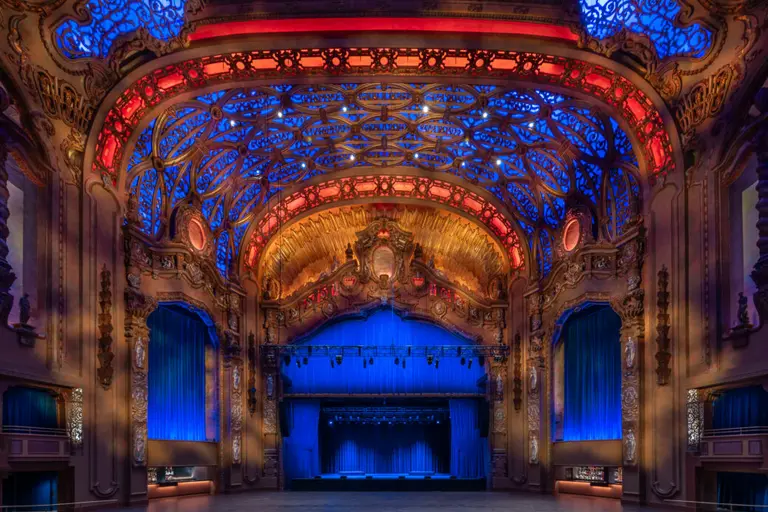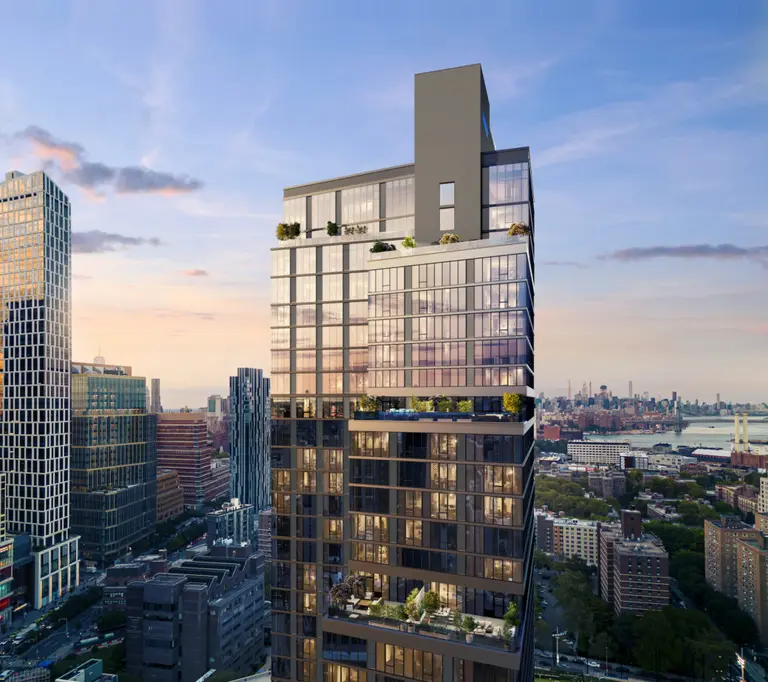The Brooklyn Edison Building is designated a landmark

Photo credit: NYC Landmarks Preservation Commission
The Landmarks Preservation Commission on Tuesday voted to designate the Brooklyn Edison Building in Downtown Brooklyn. Located at 345 Adams Street, the office building was designed by renowned architectural firm McKenzie, Voorhees & Gemlin and constructed between 1922 and 1926 for the Brooklyn Edison Company. The structure stands out for its important role in the borough’s development and its striking Renaissance Revival architectural features, according to the commission.

Originally headquartered at 364 Adams Street, the Brooklyn Edison Company was founded in 1887 to provide electricity to homes and businesses in the borough. In 1919, the company was formally reorganized after its merger with the Kings County Electric Company and became one of the biggest providers of electricity in Brooklyn.
The demand for additional electrical capacity increased as the rate of new residential developments grew throughout the borough. To meet this demand, the Brooklyn Edison Company purchased the adjacent lot at 345 Adams to construct a new larger building as its headquarters and commissioned the acclaimed architectural firm McKenzie, Voorhees & Gemlin to design it.
McKenzie, Voorhees & Gemlin were largely active from 1910 through 1925 and designed various office buildings for technological infrastructure firms across the state, including the Long Island Headquarters of the New York Telephone Company, the Barclay-Vesey Building, and the Long Distance Building of the American Telephone and Telegraph Company.
The Brooklyn Edison Building was designed and constructed in two phases. The first phase took place from 1922 to 1923, and the building expanded northward in 1926, doubling its footprint. Located on the prominent corner of Willoughby and Pearl Streets, the building replaced Loew’s Royal Theater, which was Brooklyn’s first Loew’s theater.
After its construction, the Brooklyn Edison Building became an iconic structure in the commercial and financial center of Brooklyn. The Renaissance Revival building features a tripartite design with a stone base, brick mid-section, and a set-back stone crown that adhered to the provisions of 1916 zoning laws.
It is decorated with Renaissance Revival elements, including double-height arched windows with multi-paned glass transoms, embellished ironwork, shields and festoons, and terra-cotta cornices and panels, according to the LPC.
The Brooklyn Edison Company played an important role during and after the borough’s electrification period, both as an electrical supplier and a firm introducing the latest technological developments. In line with its prominent role in innovation, the structure was designed to be the “last word” in office buildings, featuring advanced technology in its lighting and telephone systems as well as rapid-transit elevators.
“The Brooklyn Edison Building is a testament to the technological advancements that helped Brooklyn to become the thriving, vibrant borough that we know today and a tangible reminder that New York City has always been a center for innovation and creativity,” LPC Chair Sarah Carroll said.
“I’m pleased that the Commission has chosen to designate this monumental building in the heart of Brooklyn’s commercial downtown so that it can be preserved and protected for generations to come.”
The building’s interior included office spaces, showrooms, the Edison shop, a lunch room, and an auditorium that played an important role in Brooklyn’s social scene. It frequently hosted conferences, exhibitions, card-playing parties, charity fundraisers, and philanthropic meetings.
In 1943, the Brooklyn Edison Building merged with others to form ConEd and the building continued to be used by the company. The building hosted offices for Long Island University and the South Brooklyn Savings and Loan Association.
During the construction of the Brooklyn Civic Center and expansion of Adams Street during the 1950s, the western half of the block was removed, exposing the west facade of the Brooklyn Edison Building and becoming better visually connected to Downtown Brooklyn’s civic center. During this time, the main entrance was moved to Adams Street and several retail spaces were added along the corridor.
“The Brooklyn Edison Building is a testament to technological advancement and played an important role in Brooklyn’s social and cultural activities. Today, highly visible from Adams Street, Columbus Park, and Fulton Street, the building is a monumental backdrop to Brooklyn’s civic center with its intact Renaissance Revival-style elements,” according to Bilge Köse, staff member at the LPC’s research department.
Despite the changes to the lower portion of the west facade, the Brooklyn Edison Building retains its historical character and maintains highly intact Renaissance Revival elements. The building recently underwent a restoration project under the ownership of the New York State Department of Citywide Administrative Services and is still being used as an office building.
Editor’s note 6/20/24: The original version of this article was published on February 13, 2024, and has since been updated to include LPC’s vote to designate the Brooklyn Edison Building as an individual landmark.
RELATED:



























